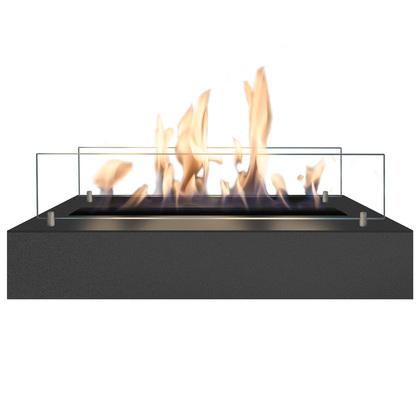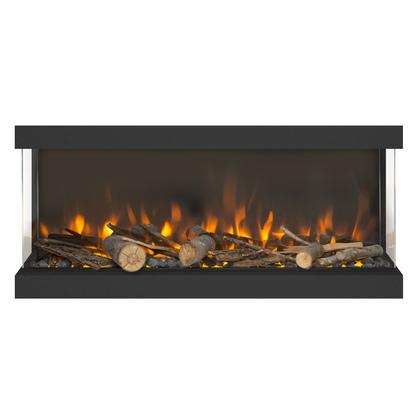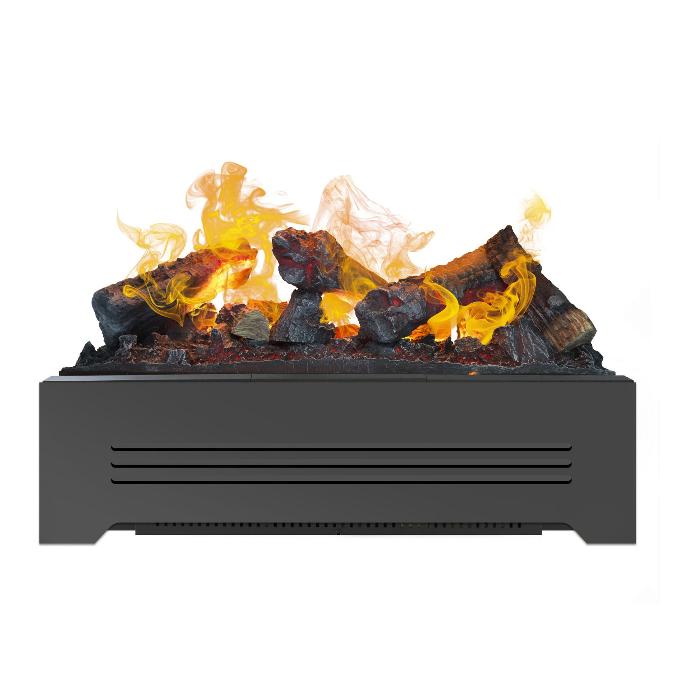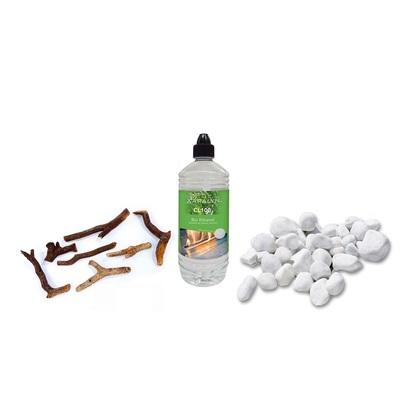Can I heat my living room with bioethanol?
Bioethanol fireplaces are popular for their stylish design, ease of use, and clean combustion. But one of the most common questions is: how much heat does a bioethanol fireplace actually produce? Can it really heat a room, or is it mostly for ambiance?
In this blog, we’ll explain what to expect from the heat output of a bioethanol fireplace, how it’s measured, and when these fireplaces are or aren’t suitable as a heating source.
Heat output in kilowatts (kW): What does it mean?
The heat output of a fireplace is usually measured in kilowatts (kW). The higher the number, the more heat is released. For bioethanol fireplaces, average heat output ranges from 1.5 to 4 kW, depending on the type of burner, the size, and the amount of bioethanol used.
For comparison:
- An electric heater typically produces around 2 kW
- A standard gas heater provides between 3 and 6 kW
- A wood-burning stove can reach 10 kW or more
So a bioethanol fireplace is comparable to a small to medium-sized heater, but with the advantage of not requiring a flue
Can a bioethanol fireplace be used as primary heating?
In most cases, no. Bioethanol fireplaces are primarily designed for atmospheric heating. While they do emit real warmth, they’re usually not powerful enough to serve as a primary heat source—especially in larger or poorly insulated rooms.
However, a bioethanol fireplace can work perfectly as:
- Supplemental heating on cold days
- A cosy heat source in a sitting area, bedroom or bathroom
- Heating for a small, well-insulated space (up to approx. 20–30 m²)
Factors that influence heat output
Several factors affect how much heat a bioethanol fireplace actually produces:
-
Burner size
Larger burners can burn more fuel at once, which generates more heat. -
Open vs. closed design
Open fireplaces radiate heat more directly but also lose it faster. Closed or semi-closed models retain warmth more efficiently. -
Burn time and fuel consumption
A burner that uses 0.5 litres per hour will usually give off more heat than one that consumes only 0.25 litres per hour. -
Insulation of the space
In a well-insulated room, the heat is retained longer, making the fireplace more effective.
Calculation example: How much heat does 1 litre of bioethanol produce?
Bioethanol has a calorific value of approximately 7.4 kWh per litre. This means:
- If you burn 0.5 litres per hour → heat output is roughly 3.7 kW per hour
- If you burn 0.3 litres per hour → heat output is about 2.2 kW
Note: This is theoretical. Some heat is lost to the surrounding air, so the actual felt heat may be slightly lower.
Heat and atmosphere in one solution
While a bioethanol fireplace usually isn't suitable as the main heat source, it offers a unique combination of real flames, direct heat output, and modern aesthetics. Especially in well-insulated homes or as a supplement (for example, alongside underfloor heating), a bioethanol fireplace is a comfortable and sustainable choice.
Want to know which model suits your space or needs best? Feel free to contact us for personal advice.



